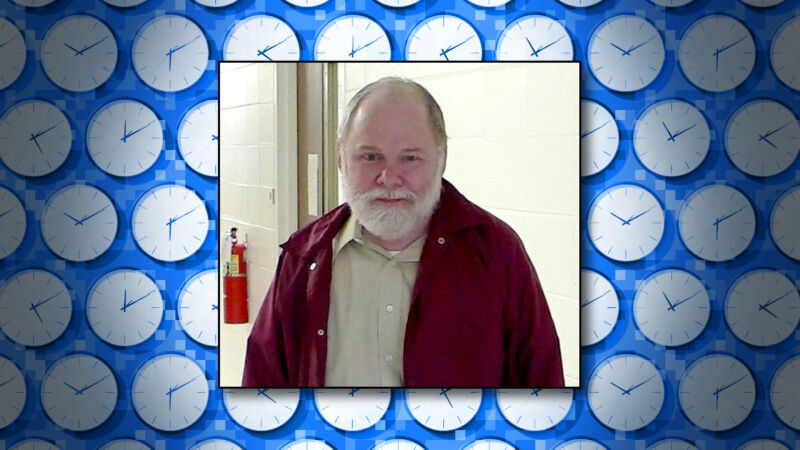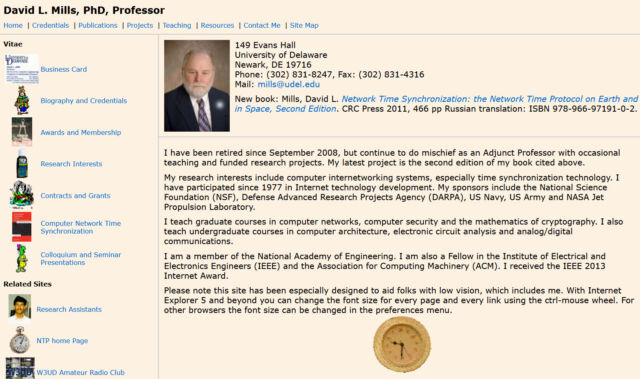Dave Mills created NTP, the protocol that holds the temporal Internet together, in 1985.

On Thursday, Internet pioneer Vint Cerf announced that Dr. David L. Mills, the inventor of Network Time Protocol (NTP), died peacefully at age 85 on January 17, 2024. The announcement came in a post on the Internet Society mailing list after Cerf was informed of David’s death by Mills’ daughter, Leigh.
“He was such an iconic element of the early Internet,” wrote Cerf.
Dr. Mills created the Network Time Protocol (NTP) in 1985 to address a crucial challenge in the online world: the synchronization of time across different computer systems and networks. In a digital environment where computers and servers are located all over the world, each with its own internal clock, there’s a significant need for a standardized and accurate timekeeping system.
NTP provides the solution by allowing clocks of computers over a network to synchronize to a common time source. This synchronization is vital for everything from data integrity to network security. For example, NTP keeps network financial transaction timestamps accurate, and it ensures accurate and synchronized timestamps for logging and monitoring network activities.
In the 1970s, during his tenure at COMSAT and involvement with ARPANET (the precursor to the Internet), Mills first identified the need for synchronized time across computer networks. His solution aligned computers to within tens of milliseconds. NTP now operates on billions of devices worldwide, coordinating time across every continent, and has become a cornerstone of modern digital infrastructure.Advertisement
As detailed in an excellent 2022 New Yorker profile by Nate Hopper, Mills faced significant challenges in maintaining and evolving the protocol, especially as the Internet grew in scale and complexity. His work highlighted the often under-appreciated role of key open source software developers (a topic explored quite well in a 2020 xkcd comic). Mills was born with glaucoma and lost his sight, eventually becoming completely blind. Due to difficulties with his sight, Mills turned over control of the protocol to Harlan Stenn in the 2000s.

Aside from his work on NTP, Mills also invented the first “Fuzzball router” for NSFNET (one of the first modern routers, based on the DEC PDP-11 computer), created one of the first implementations of FTP, inspired the creation of “ping,” and played a key role in Internet architecture as the first chairman of the Internet Architecture Task Force.
Mills was widely recognized for his work, becoming a Fellow of the Association for Computing Machinery in 1999 and the Institute of Electrical and Electronics Engineers in 2002, as well as receiving the IEEE Internet Award in 2013 for contributions to network protocols and timekeeping in the development of the Internet.
Mills received his PhD in Computer and Communication Sciences from the University of Michigan in 1971. At the time of his death, Mills was an emeritus professor at the University of Delaware, having retired in 2008 after teaching there for 22 years.




